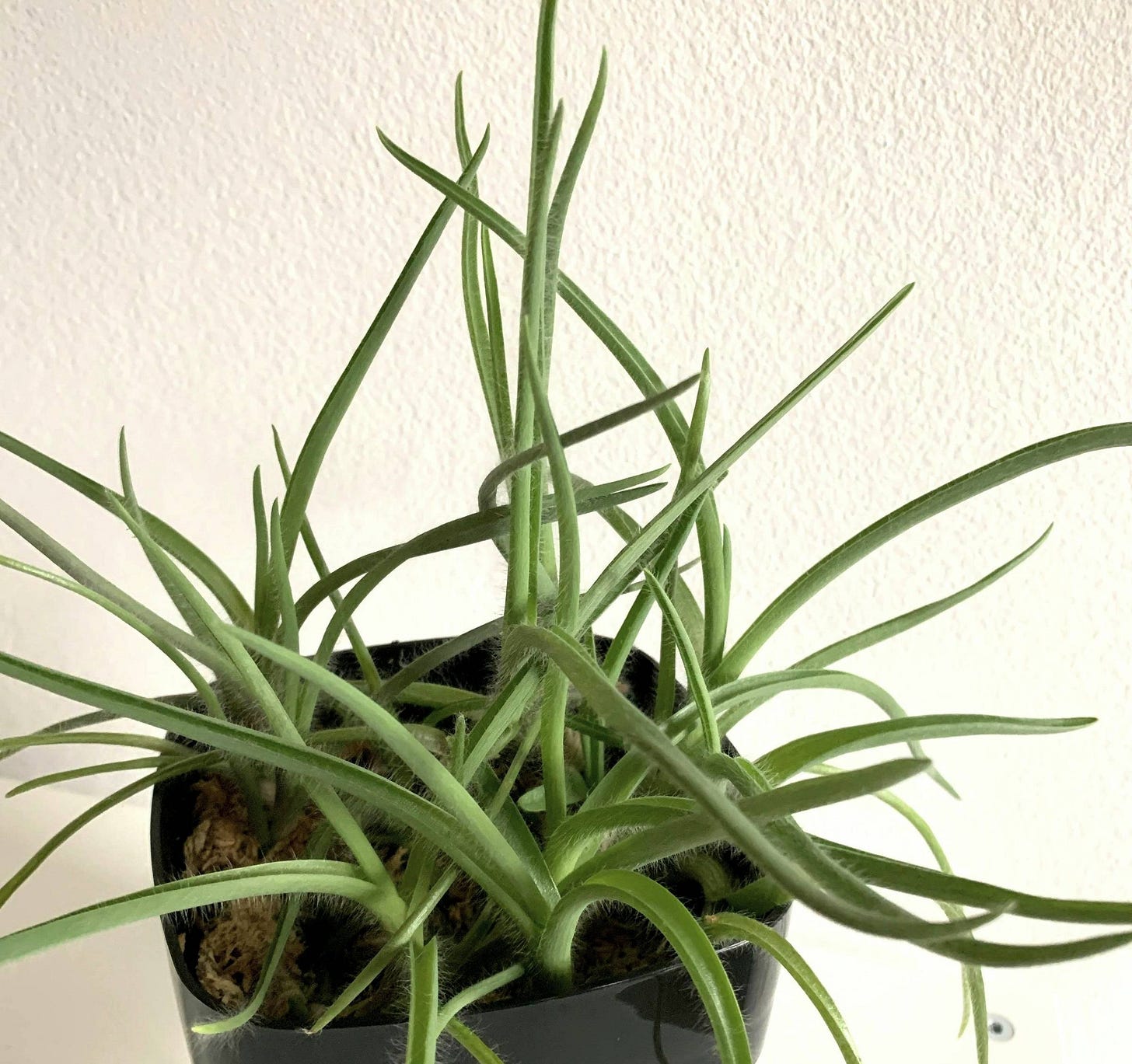Tradescantia Care Myths That Set You Up for Trouble
I hope you’ve had a fantastic Halloween and are enjoying the last of the fall colors before winter sets in.
Fall is truly here, bringing shorter days and cooler temperatures. For me, this season is all about embracing the autumn vibes while also preparing my plants for the darker months ahead.
So, I thought I’d share a bit of what’s happening behind the scenes: my plans for overwintering some of my Tradescantias in our storage room, and bust a few common care myths about Tradescantias that, in my opinion, might be setting you up for trouble.
Tradescantia of the Week: Hirta Swifttale
I’m happy to introduce a new section in the newsletter where I’ll be highlighting a different Tradescantia cultivar each time. This week, fitting for Halloween, it’s Hirta Swifftale! With its tentacle-like leaves, it brings a striking look that stands out in any collection. But don’t be fooled by its unusual appearance—despite its odd shape, Swifftale produces the sweetest little purple flowers.
Hirta Swifftale has been around for about 20 years, but it’s still relatively uncommon and mainly found within Europe. If you’re lucky enough to come across one, it’s definitely an interesting addition!
Behind the Scenes: My Winter Storage Experiment
With winter on the way, I know my outdoor Tradescantias that have been thriving all summer won’t survive much longer. It’s the same story every year since they can’t handle temperatures below 0°C, and it’s only a matter of time before we reach that here. In past years, I’ve saved a few cuttings from each cultivar indoors to keep them in my collection. But this year, it’s already quite crowded inside, so I’ve decided to try something new.
I set up a new shelf in our storage room next to a window, and I’m hoping to overwinter a few pots there. It gets pretty cold in the storage room, but I don’t think it will drop below 0°C. So, we’ll see how it goes! My plan is to keep watering and maintenance to a minimum and hope for the best.
Care Myths That Set You Up for Trouble
There are plenty of care tips out there for Tradescantias. Many are helpful, but some can actually cause more harm than good! Let’s look at a few common tips you might want to skip—and what to do instead to keep your Tradescantias happy.
Myth #1: Water When the Top Inch Has Dried Out
This advice often leads to overwatering and root rot. Tradescantias can store water in their stems and leaves, so the idea that they should never dry out completely isn’t accurate. Brown tips aren’t caused by drying out either. In fact, allowing the soil to dry out between waterings minimizes the risk of root rot—especially since they’re more likely to suffer from overwatering than from thirst.
Not all Tradescantias are the same, though. Varieties with thinner leaves and stems, like Fluminensis, need water a bit sooner than those with thicker stems, like Sillamontana and Nanouk, which benefit from a full dry-out before watering.
My advice: always check the soil before watering and let them dry out completely between waterings.
Myth #2: Tradescantias Should Never Be Placed in Direct Sunlight
The most common advice is to keep Tradescantias in bright, indirect light. While this isn’t exactly wrong, it can be a bit confusing and not always the most helpful. Tradescantias love light—the more, the better. Many varieties will look their best with direct sunlight. The key is to avoid placing them in direct light immediately if they’re not used to it; instead, let them adjust gradually to prevent sunburn.
I’ve also heard that Tradescantias do well in low-light spots, like basements or hallways. While some of the green varieties can survive in those conditions, they won’t be happy. In low light, Tradescantias tend to become long and leggy and they will loose their vibrant colours.
Myth #3: You Can’t Repot a Tradescantia Right After You Buy It
Tradescantias are very adaptable and generally handle changes in environment well. So, unlike many other plants, the advice to avoid repotting immediately after purchase doesn’t really apply to Tradescantias. Repotting isn’t always necessary right away, but sometimes it’s actually better to do it. If the soil is too wet, the pot is the wrong size (especially if it’s too big), or there’s another issue, repotting can give your plant a healthier start. Your Tradescantia will do just fine with a fresh start!
That’s all for this week! I hope these tips help make caring for your Tradescantias feel a bit easier and clear up some of the confusing advice out there. If you’re ever unsure about something or just want to chat plants, feel free to reach out—I’m always here to help!
If you haven’t already, don’t forget to subscribe so you never miss out on future newsletter.
Thanks for reading, and happy planting! 🌿
/Katja




